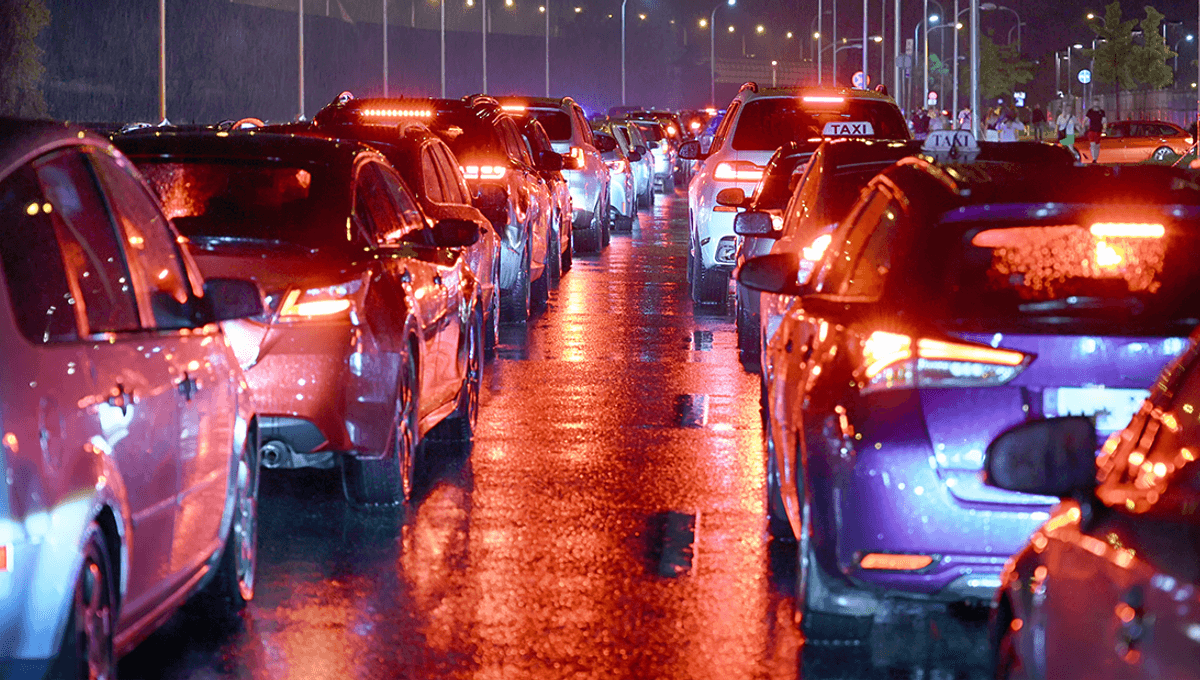
Have you ever been stuck in a big queue of traffic and wondered what the holdup was, only to find no signs of a car crash or any other type of holdup by the time you get to the front?
If so, you may have fallen victim to a “phantom traffic jam”, or a “ghost jam”, or a “traffic snake”, depending on how dramatic you want to be about it. These traffic jams, with no obvious cause, can be modeled surprisingly well with hydrodynamics used to describe the flow of fluids.
“A phantom traffic jam is an emergent phenomenon whose behavior takes on a life of its own, greater than the sum of its parts,” mathematician and traffic model expert Benjamin Seibold explains in a video for TED-Ed.
On a lightly-used road, if a fast-moving driver brakes as they approach a vehicle in front, the car behind it might have plenty of space to reduce its speed, without in turn impacting the vehicle behind it. But once there is a certain density of vehicles on a road – when cars are generally less than 35 meters (115 feet) apart – this is no longer the case.
That’s not to say that there are too many cars on the road for a good flow of traffic. In situations where cars could flow nicely if everyone maintained a good, constant speed, phantom traffic jams can still arise.
“In this dense, but flowing, traffic, it only takes a minor disturbance to set off the chain of events that causes a traffic jam,” Seibold continues. “Say one driver brakes slightly. Each successive driver then brakes a little more strongly, creating a wave of brake lights that propagates backward through the cars on the road. These stop-and-go waves can travel along a highway for miles.”
Kilometers behind the initial car, the wave of higher density of vehicles and slower speeds can cause traffic to grind to a standstill.
These jams can occur especially where two lines of traffic merge (e.g. one motorway joining another) or on roads without any apparent disturbances, like a constantly flowing circle.
These interactions can be surprisingly well modeled with cars as particles, and stop-go waves traveling back through the traffic as shockwaves similar to compression waves in a fluid.
“The phenomenon of stop-and-go waves (start-stop waves) has been empirically studied by a lot of authors, including Edie and Foote (1958), Mika et al. (1969), and Koshi et al. (1983),” Dirk Helbing of the Institute for Economics and Traffic, Dresden University of Technology, explains in a review on the topic.
“The latter have found that the parts of the velocity-profile, which belong to the fluent stages of stop-and-go waves, do not significantly depend on the flow (regarding their height and length), while the frequency does. Correspondingly, there is no characteristic frequency of stop-and-go traffic, which indicates that we are confronted with non-linear waves. The average duration of one wave period is normally between 4 and 20 minutes for wide traffic jams, and the average wave length between 2.5 and 5 km [1.55 and 3.1 miles].”
These small disturbances can cause great perturbations against the flow of traffic. Weirdly, for people who would like to think human drivers do not act like particles in a fluid, this emergent “wave” appears to be present around the world, little-affected by driver and road variability.
“The propagation velocity C in congested traffic seems to be roughly comparable with a ‘natural constant’. In each country, it has a typical value in the range C0 = 15 ± 5 km/h [9.3 ± 3 miles per hour], depending on the accepted safe time clearance and average vehicle length,” Helbing continues.
“Therefore, fully developed traffic jams can move in parallel over a long time periods and road sections. Their propagation speed is not even influenced by ramps, intersections, or synchronized flow upstream of bottlenecks.”
Phantom traffic jams can be pretty annoying, but can be partly prevented by better driving practices, such as leaving more space in front of you, preventing the need to hard brake. MIT computer scientist Berthold Horn explained to Vox that in high-density traffic, drivers should attempt to stay halfway between the car in front and the car behind, again to avoid the need to break suddenly. However, even with everyone driving well, over a critical density, even a small deviation from constant driving can cause bigger problems down the line.
Source Link: What Are Phantom Traffic Jams? The Emergent Phenomenon Making You Late For Work